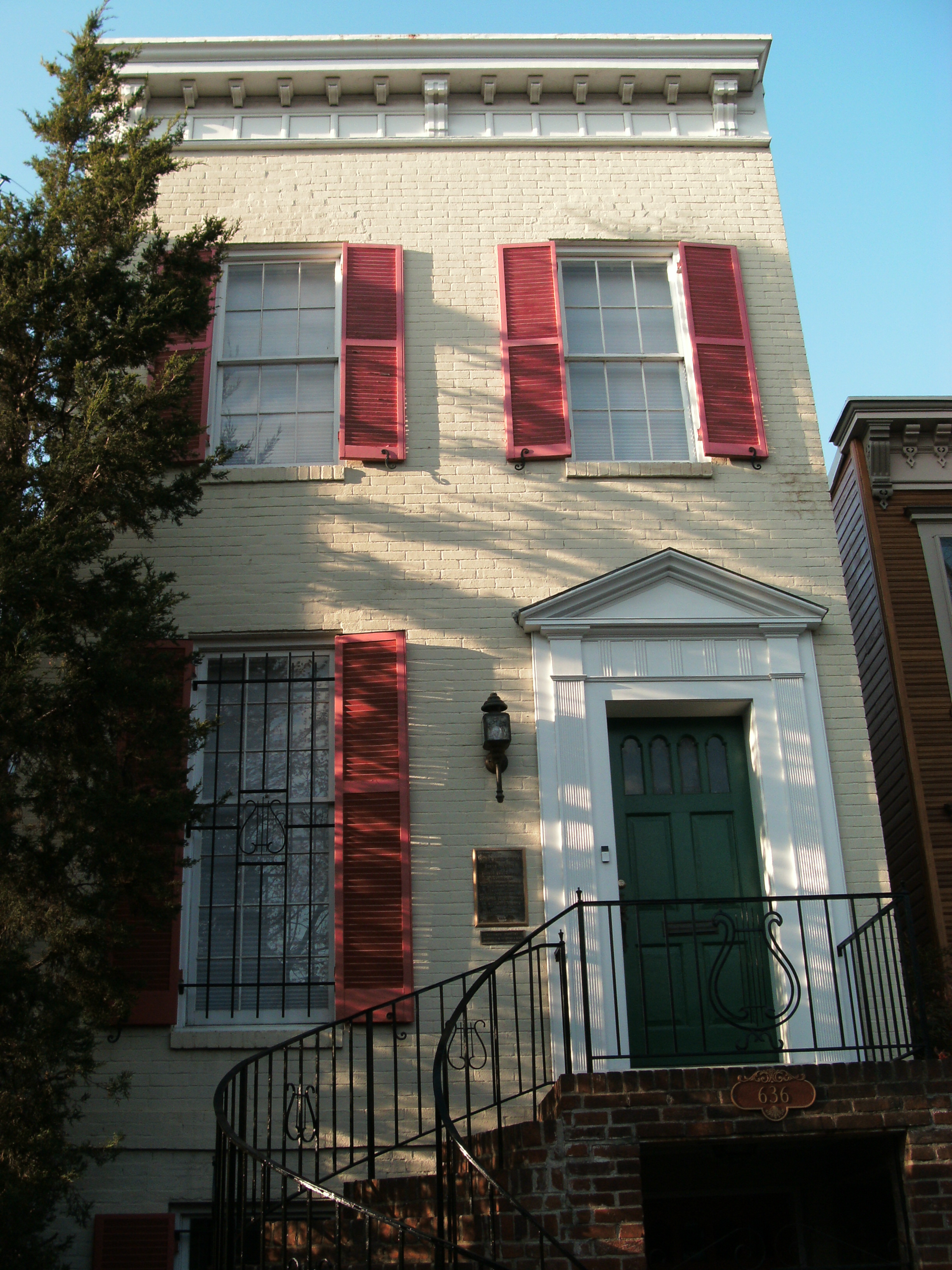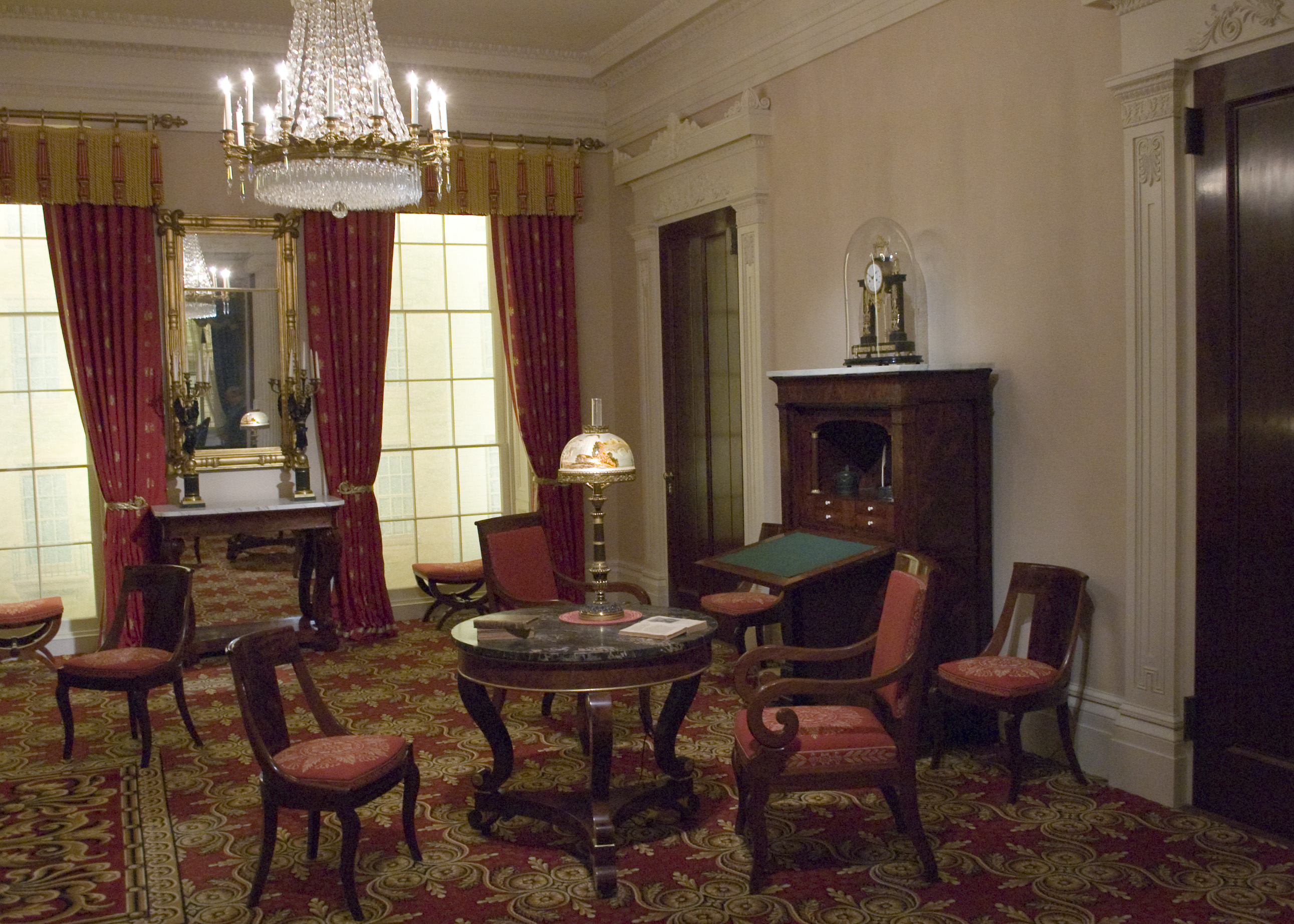|
The Thunderer
"The Thunderer" is a march composed by John Philip Sousa in 1889. The origin of the name is not officially known, though it is speculated that it gets its name from the "pyrotechnic ffectsof the drum and bugle in hescore." It is also one of Sousa's most famous and is one of the more difficult compositions to perform. Composition The piece is in much the same manner as most of Sousa's music; however, it is one of his first "distinctly American-sounding marches." The march follows the standard form (IAABBCDCDC) that is used in many of his other works. As is common, his themes are contrasting. During the repeat of the B section, Sousa introduces new countermelodic ideas. The trio is songlike. There is a ritardando leading into the repeat of the final theme, segueing to the piece's conclusion. See also * List of marches by John Philip Sousa John Philip Sousa was an American composer and conductor of the late Romantic era known primarily for American military marches. He ... [...More Info...] [...Related Items...] OR: [Wikipedia] [Google] [Baidu] |
John Philip Sousa
John Philip Sousa ( ; November 6, 1854 – March 6, 1932) was an American composer and conductor of the late Romantic era known primarily for American military marches. He is known as "The March King" or the "American March King", to distinguish him from his British counterpart Kenneth J. Alford. Among his best-known marches are " The Stars and Stripes Forever" (National March of the United States of America), "Semper Fidelis" (official march of the United States Marine Corps), " The Liberty Bell", "The Thunderer", and "The Washington Post". Sousa began his career playing violin and studying music theory and composition under John Esputa and George Felix Benkert. His father enlisted him in the United States Marine Band as an apprentice in 1868. He left the band in 1875, and over the next five years, he performed as a violinist and learned to conduct. In 1880 he rejoined the Marine Band, and he served there for 12 years as director, after which he was hired to conduct a ba ... [...More Info...] [...Related Items...] OR: [Wikipedia] [Google] [Baidu] |
United States Marine Band
The United States Marine Band is the premier band of the United States Marine Corps. Established by act of Congress on July 11, 1798, it is the oldest of the United States military bands and the oldest professional musical organization in the United States. Today, the Marine Band includes the Marine Chamber Orchestra and Marine Chamber Ensembles. The Marine Band is entirely separate from its sister military band, the United States Marine Drum and Bugle Corps ("The Commandant's Own") and the 10 active duty Marine Corps field bands. The Marine Band has been uniquely known as "The President's Own" since 1801 due to its historical connection to the President of the United States. The relationship between the Marine Band and the White House began on New Year's Day 1801 when President John Adams invited the band to perform at the Executive Mansion. Later that year, Thomas Jefferson initiated the tradition of Marine Band performances by requesting that it perform at his inaugurat ... [...More Info...] [...Related Items...] OR: [Wikipedia] [Google] [Baidu] |
United States Army Band
The United States Army Band, also known as "Pershing's Own", is the premier musical organization of the United States Army, founded in 1922. There are currently nine official performing ensembles in the unit: The U.S. Army Concert Band, The U.S. Army Ceremonial Band, The U.S. Army Chorus, The U.S. Army Blues, The U.S. Army Band Downrange, The U.S. Army Herald Trumpets, The U.S. Army Strings, The U.S. Army Voices, and The U.S. Army Brass Quintet. History The United States Army Band was established on 25 January 1922 by General of the Armies John J. Pershing, Army Chief of Staff in emulation of European military bands he heard during World War I. In its early years, the band was featured on RCA, CBS, the Mutual Broadcasting Network, and other networks. The band also completed four national tours between 1928 and 1931 and was noted for its professionalism during a trip to Spain for the Ibero-American Exposition of 1929. In June 1943, the United States Army Band was called overse ... [...More Info...] [...Related Items...] OR: [Wikipedia] [Google] [Baidu] |
March (music)
A march, as a musical genre, is a piece of music with a strong regular rhythm which in origin was expressly written for marching to and most frequently performed by a military band. In mood, marches range from the moving death march in Wagner's ''Götterdämmerung'' to the brisk military marches of John Philip Sousa and the martial hymns of the late 19th century. Examples of the varied use of the march can be found in Beethoven's ''Eroica'' Symphony, in the Marches Militaires of Franz Schubert, in the Marche funèbre in Chopin's Sonata in B flat minor, the "''Jäger March''" in the by Jean Sibelius, and in the Dead March in Handel's ''Saul''. Characteristics Marches can be written in any time signature, but the most common time signatures are , ('' alla breve'' , although this may refer to 2 time of Johannes Brahms, or ''cut time''), or . However, some modern marches are being written in or time. The modern march tempo is typically around 120 beats per minute. Many f ... [...More Info...] [...Related Items...] OR: [Wikipedia] [Google] [Baidu] |
Ritardando
In musical terminology, tempo ( Italian, 'time'; plural ''tempos'', or ''tempi'' from the Italian plural) is the speed or pace of a given piece. In classical music, tempo is typically indicated with an instruction at the start of a piece (often using conventional Italian terms) and is usually measured in beats per minute (or bpm). In modern classical compositions, a "metronome mark" in beats per minute may supplement or replace the normal tempo marking, while in modern genres like electronic dance music, tempo will typically simply be stated in BPM. Tempo may be separated from articulation and meter, or these aspects may be indicated along with tempo, all contributing to the overall texture. While the ability to hold a steady tempo is a vital skill for a musical performer, tempo is changeable. Depending on the genre of a piece of music and the performers' interpretation, a piece may be played with slight tempo rubato or drastic variances. In ensembles, the tempo is often in ... [...More Info...] [...Related Items...] OR: [Wikipedia] [Google] [Baidu] |
List Of Marches By John Philip Sousa
John Philip Sousa was an American composer and conductor of the late Romantic era known primarily for American military marches. He composed 136 marches from 1873 until his death in 1932. He derived few of his marches from his other musical compositions such as melodies and operettas. " The Stars and Stripes Forever" is considered Sousa's most famous composition. A British journalist named Sousa "The March King", in comparison to "The Waltz King" — Johann Strauss II. However, not all of Sousa's marches had the same level of public appeal. Some of his early marches are lesser known and rarely performed. He composed marches for several American universities, including the universities of Minnesota, Illinois (now known as University of Illinois Urbana-Champaign), Nebraska, Kansas, Marquette, and the Pennsylvania Military College (now known as Widener University). He served as leader of the Marine Band from 1880 to 1892, and performed at the inaugural balls of President Ja ... [...More Info...] [...Related Items...] OR: [Wikipedia] [Google] [Baidu] |
1889 Compositions
Events January–March * January 1 ** The total solar eclipse of January 1, 1889 is seen over parts of California and Nevada. ** Paiute spiritual leader Wovoka experiences a vision, leading to the start of the Ghost Dance movement in the Dakotas. * January 4 – An Act to Regulate Appointments in the Marine Hospital Service of the United States is signed by President Grover Cleveland. It establishes a Commissioned Corps of officers, as a predecessor to the modern-day U.S. Public Health Service Commissioned Corps. * January 5 – Preston North End F.C. is declared the winner of the inaugural Football League in England. * January 8 – Herman Hollerith receives a patent for his electric tabulating machine in the United States. * January 15 – The Coca-Cola Company is originally incorporated as the Pemberton Medicine Company in Atlanta, Georgia. * January 22 – Columbia Phonograph is formed in Washington, D.C. * January 30 – Rudolf, Crown Prince of Austria and his mi ... [...More Info...] [...Related Items...] OR: [Wikipedia] [Google] [Baidu] |
Sousa Marches
John Philip Sousa was an American composer and conductor of the late Romantic era known primarily for American military marches. He composed 136 marches from 1873 until his death in 1932. He derived few of his marches from his other musical compositions such as melodies and operettas. " The Stars and Stripes Forever" is considered Sousa's most famous composition. A British journalist named Sousa "The March King", in comparison to "The Waltz King" — Johann Strauss II. However, not all of Sousa's marches had the same level of public appeal. Some of his early marches are lesser known and rarely performed. He composed marches for several American universities, including the universities of Minnesota, Illinois (now known as University of Illinois Urbana-Champaign), Nebraska, Kansas, Marquette, and the Pennsylvania Military College (now known as Widener University). He served as leader of the Marine Band from 1880 to 1892, and performed at the inaugural balls of President Ja ... [...More Info...] [...Related Items...] OR: [Wikipedia] [Google] [Baidu] |
Parlor Songs
A parlour (or parlor) is a reception room or public space. In medieval Christian Europe, the "outer parlour" was the room where the monks or nuns conducted business with those outside the monastery and the "inner parlour" was used for necessary conversation between resident members. In the English-speaking world of the 18th and 19th century, having a parlour room was evidence of social status. Etymology In the early 13th century, parlor originally referred to a room where monks could go to talk, derived from the Old French word ''parloir'' or ''parler'' ("to speak"), it entered the English language around the turn of the 16th century. History The first known use of the word to denote a room was in medieval Christian Europe, when it designated the two rooms in a monastery where clergy, constrained by vow or regulation from speaking otherwise in the cloister, were allowed to converse without disturbing their fellows. The "outer parlour" was the room where the monks or nun ... [...More Info...] [...Related Items...] OR: [Wikipedia] [Google] [Baidu] |
American Military Marches
American(s) may refer to: * American, something of, from, or related to the United States of America, commonly known as the "United States" or "America" ** Americans, citizens and nationals of the United States of America ** American ancestry, people who self-identify their ancestry as "American" ** American English, the set of varieties of the English language native to the United States ** Native Americans in the United States, indigenous peoples of the United States * American, something of, from, or related to the Americas, also known as "America" ** Indigenous peoples of the Americas * American (word), for analysis and history of the meanings in various contexts Organizations * American Airlines, U.S.-based airline headquartered in Fort Worth, Texas * American Athletic Conference, an American college athletic conference * American Recordings (record label), a record label previously known as Def American * American University, in Washington, D.C. Sports teams Soccer * ... [...More Info...] [...Related Items...] OR: [Wikipedia] [Google] [Baidu] |



.jpg)

